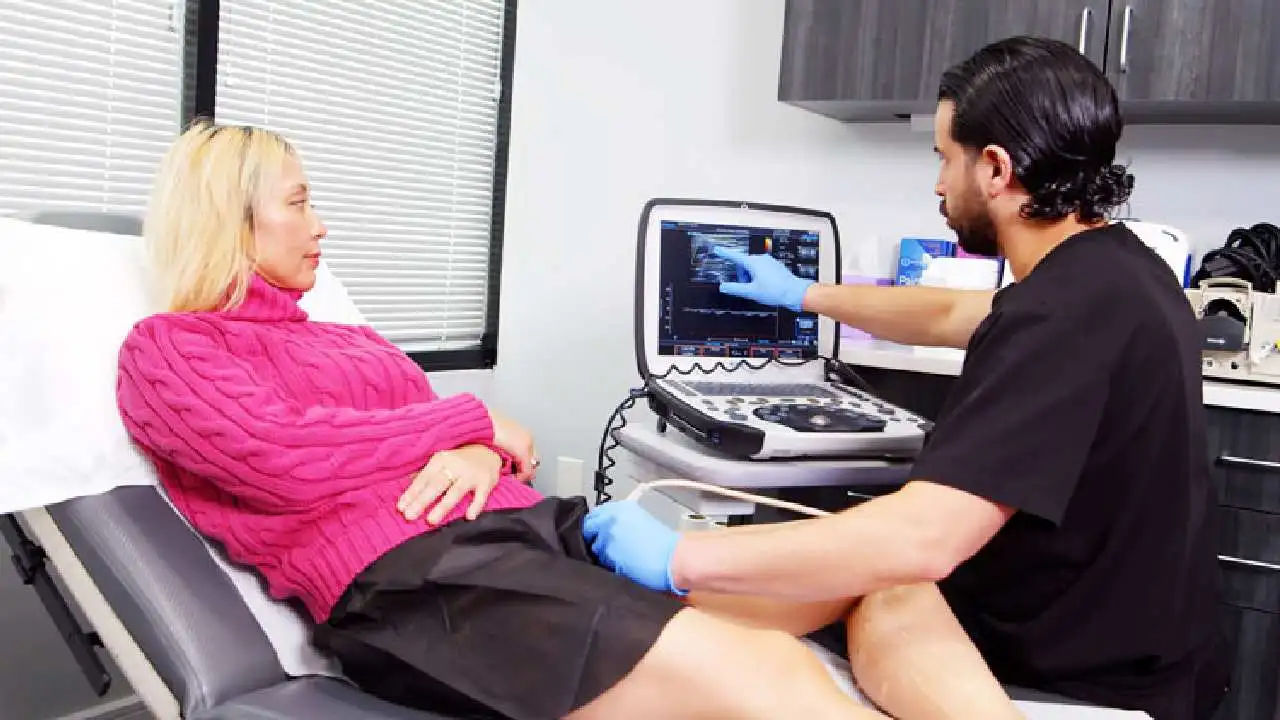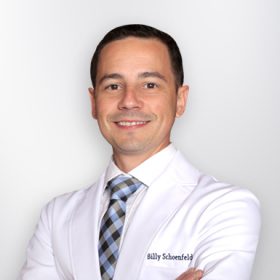Laser therapy is one of the most common non-invasive treatments for spider veins, but it’s not the most effective. Laser therapy involves channeling light waves into the spider veins. The light energy gradually destroys the spider veins’ walls, facilitating that eventual absorption by the body. Laser therapy can only work on extremely small and thin spider veins; even then, it may take several sessions to see the results. After laser treatment for spider veins, the blood vessels will gradually lighten over six weeks.
If you don’t see enough improvements after six weeks, you need another round of laser therapy sessions, following which you’ll need to wait another six weeks. It may take several weeks or months for your spider veins to fade away after laser treatment. And even then, laser therapy only affects the thinnest spider veins, so you may still have numerous spider veins left on your skin’s surface. You may also develop new spider veins if the underlying vein disease hasn’t been treated.
Laser therapy for spider veins is generally offered in medical spas because it doesn’t have to be performed by vein specialists. However, the laser technicians in medical spas don’t have the training to diagnose and treat the root cause of spider veins and other vein problems. That’s why you should only pursue vein treatments from highly-skilled, board-certified vein doctors — not medical spas and laser technicians. And instead of laser therapy, you should consider sclerotherapy for your spider veins.
Vein Treatment Clinic is a group of state-of-the-art spider vein and varicose vein treatment clinics. We offer the latest and safest minimally invasive treatments for spider veins and varicose veins, including endovenous laser ablation, radiofrequency ablation, venaseal, and ambulatory phlebectomy. Instead of focusing simply on cosmetic improvements, we diagnose and treat the root cause of spider veins, ensuring safe, consistent, and long-lasting results. You can find our vein clinics in New York, New Jersey, California, and Maryland.
Can spider veins get worse after laser treatment?
Your spider veins will seem to worsen after laser treatment. The laser energy damages the walls of spider veins, turning them into hardened scar tissues eventually absorbed by the body. When the spider veins turn into scar tissues, they might look dark against your skin, making it seem like your condition is worsening. But that’s a natural part of the process. However, since laser therapy doesn’t address the root cause of spider veins (venous insufficiency), you may continue developing new spider veins.
You must contact a board-certified vein doctor who thoroughly diagnoses the root cause of spider veins to curate a personalized vein treatment plan. The vein doctor must treat underlying vein disease, following which they can focus on spider veins. If your vein doctors treat spider veins without addressing the root cause, your spider veins will return. Since laser technicians usually offer laser therapy, patients don’t receive an official vein disease diagnosis, leading to a high risk of vein disease recurrence.
How long does it take for spider veins to disappear after sclerotherapy?
Sclerotherapy is the most effective treatment for spider veins. Sclerotherapy involves injecting a sclerosant medicine into spider veins to fuse their vein walls together, turning them into hardened scar tissues eventually reabsorbed by the body. After sclerotherapy, it usually takes around three weeks for the targeted spider veins to fade away completely. But if you have a large number of spider veins, you may need another session for the remaining spider veins.
Which is better: laser or injections for spider veins?
Injections for spider veins, also known as sclerotherapy, are widely considered the best treatment for spider veins. Laser therapy is only suitable for the thinnest and smallest spider veins, and the results appear after several weeks and months. Sclerotherapy, meanwhile, guarantees optimal results — each sclerosant injection effectively closes one spider vein. You can enjoy dramatic improvements after only three weeks.
Do spider veins come back after treatment?
Sclerotherapy can effectively remove spider veins from your skin’s surface. Each sclerosant injection can remove one spider vein. The targeted spider veins can’t come back, but you can still develop new spider veins, especially if your vein doctor doesn’t identify and treat underlying vein disease. The best way to prevent the formation of new spider veins is to find a vein doctor who thoroughly diagnoses and treats underlying chronic venous insufficiency before addressing your spider veins.
How long do veins look worse after sclerotherapy?
The sclerosant injection irritates the spider veins’ walls, turning them into hardened scar tissues that are eventually reabsorbed by the body. After sclerotherapy, your spider veins will look darker against your skin because they’ll harden into scar tissues. But the scar tissues are gradually reabsorbed by your body within three weeks, following which they’ll fade away. As such, your veins will only look worse for a week or two before improving.
How many sessions of sclerotherapy are needed for spider veins?
Each sclerosant injection can effectively target one spider vein. But the number of injections your vein doctor can deliver in one session is limited. As such, the total number of sessions necessary will depend on the number of spider veins in your body. Regardless of the density of spider veins, you can rest assured that you’ll notice dramatic improvements after each session.










